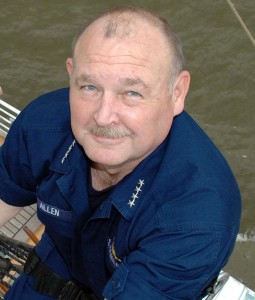In case you haven’t noticed lately, America’s infrastructure could use a makeover. Many of the things that help this country “GO” – roads, bridges, utilities and more – are in poor shape and in many places, crumbling before our eyes. It’s hard to believe a superpower like ours could find itself in a spot like this, but we are, and some serious fixing is in order.
We became a superpower not just through military might but through the engine that is our economy that produces jobs, technologies and opportunities. Central to that engine’s operations is our nation’s infrastructure and the need to update and improve America’s aging infrastructure is increasingly paramount to our country’s on-going prosperity and safety. The poor and overburdened conditions of our roads, bridges, transportation systems and others hinder growth and leave us vulnerable to security threats. In the wake of the Great Recession, our country’s industry and government require critical infrastructure capable of supporting our 21st century goals and aspirations.
While these challenges are increasingly evident and the need for improvement is widely understood throughout government, the country has seen little in the way of real change when it comes to building a stronger, more resilient America. When the Obama Administration took office, the President noted several changes in the way government would mete out funding for investments in things like improving infrastructure. The White House also championed a focus on building security into infrastructure, as well as creating a National Infrastructure Reinvestment Bank and investing in critical infrastructure projects.
These are all important efforts. Yet, for a president who based his campaign on the concept of change, we’ve yet to see any real change with regard to how we approach infrastructure improvements. Funding for the National Infrastructure Reinvestment Bank, for example, was nowhere to be found in the 2009 Recovery Act, the 2009 budget cycle or even the 2010 appropriations process. Even as efforts have started on the Hill in support of a National Infrastructure Bank, the Administration has largely been on the sidelines.
While it is easy to take shots at the White House for not being more aggressive in these areas, the truth is that not enough of us are talking and thinking strategically about infrastructure investment priorities, how risk and resilience are considered, and how we are going to pay for these much-needed updates. To be sure, some of the nation’s experts have made public calls for infrastructure improvements. The American Society of Civil Engineers (ASCE) issued a 2009 report card on America’s infrastructure. We got a D, just as we did in 2005, 2001 and 1998. The problem is clearly not going to right itself on its own. These are serious issues that require our country’s focused effort, from the government leaders with their fingers on the purse strings to the subject matter experts who know infrastructure and resilience inside and out.
Fortunately, America boasts some of the world’s brightest minds and wisest leaders. Bringing these key stakeholders and experts to the table to work together and establish real, achievable steps towards a stronger infrastructure is an important part of defining the path forward.
 That’s why, as part of a newly established Business Horizon Series, the National Chamber Foundation – the think tank of the US Chamber of Commerce – in coordination with the U.S. Chamber’s Let’s Rebuild America initiative, will host a half-day program, “Infrastructure: What We Want, What We Need” on July 19th. Our keynote speaker will be the highly respected and much-regarded Adm. Thad Allen, former commandant of the U.S. Coast Guard. There are truly few people in America (or the world for that matter) who can attest to lessons learned when infrastructures fail.
That’s why, as part of a newly established Business Horizon Series, the National Chamber Foundation – the think tank of the US Chamber of Commerce – in coordination with the U.S. Chamber’s Let’s Rebuild America initiative, will host a half-day program, “Infrastructure: What We Want, What We Need” on July 19th. Our keynote speaker will be the highly respected and much-regarded Adm. Thad Allen, former commandant of the U.S. Coast Guard. There are truly few people in America (or the world for that matter) who can attest to lessons learned when infrastructures fail.
Adm. Allen, currently a senior fellow at the RAND Corporation, led the country’s response to Hurricanes Katrina and Rita and delayed his retirement to serve as National Incident Commander of the BP oil spill. As one of America’s most distinguished and accomplished crisis leaders, Adm. Allen will talk about the challenges and opportunities we have for strategically investing in the resilience of our nation’s infrastructure.
During the program, we will also release the Let’s Rebuild America annual update to its Infrastructure Performance Index series, which measures how well transportation, energy, broadband, and water systems are meeting the nation’s infrastructure demands.
We will conclude the event with a senior-level panel of public and private sector infrastructure investment, protection and resilience leaders who will discuss, “Infrastructure: What We Want; What We Need.” They will include:
Moderator: Al Martinez-Fonts, Executive Vice President, US Forum for Policy Innovation ( a retired 30-year banking executive and former DHS Assistant Secretary for the Private Sector
Panelists:
• Todd Keil, Assistant Secretary for Infrastructure Protection, US Department of Homeland Security
• Brian Kamoie, White House National Security Council, Office of Resilience
• Elliot “Lee” G. Sander, Group Chief Executive, Global Transportation, AECOM
• John A. Flaherty, Principal, The Carlyle Group
To attend the event, which begins at 9 a.m. at the Chamber of Commerce, you can register online. You can also watch a live webcast on the day of the program.
History records that no economy can function without a viable and dynamic infrastructure that creates jobs and spurs innovation in limitless ways. Updating the nation’s infrastructure means a lot to our country’s future. I hope you can join us for this important discussion.


